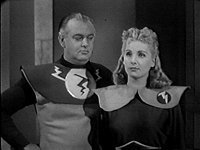
Lawrence Palinkas, a medical anthropologist at the University of Southern California, has released a study of the sexual behavior in the closed confines of Antarctic Research stations. Due to the limited team size, close proximity and isolation for long periods of time NASA has taken an interest in the study.
With plans to return to the moon, and an eventual three year trip to Mars, the possibility of romantic relationships developing, and breaking apart, are a real possibility. Studies from Antarctica show that a 50-50 split between men and women in the crew is optimum. While sex can relieve boredom (and I wonder how much of my tax dollars were spent figuring that fact out?), there is of course the possibility of jealousy developing between team members. The biggest worry is an unplanned pregnancy, since no means to deliver and care for a child would exist on a long flight.
Also, to quote the article Sex in space: The new frontier in the California Aggie, "Then there are also technical problems with having sex in space, such as weightlessness and close physical monitoring by a station on earth, leaving astronauts with little privacy or alone time, she said."
Erm... I'll leave pondering the "technical problems" to you.
9 comments:
Pretty funny. This looks like a Lileks article. That is a compliment, 'cause I think he's hilarious.
ponder, ponder, ponder....
You know, if they'd laid off of that for a bit, they might have beaten Chicago.
Yeah, but where was the sex? "Usually, the relationships end in the middle of the crew’s year at the research station or at the end, leading to arguments and sometimes a breakdown among crew members, Palinkas said." Pah. Relationships, arguments. Where was the good stuff? You know: who, how often, squeaky beds, screamers, so on and so forth. Heck, even roomates have to deal with this stuff, so we should at least find out if the Antartic teams have any special advice.
for some reason, this comes to mind:
"...And a computer could be set and programmed to accept factors from youth, health, sexual fertility, intelligence, and a cross section of necessary skills. Of course it would be absolutely vital that our top government and military men be included to foster and impart the required principles of leadership and tradition. ... Naturally, they would breed prodigiously, eh? There would be much time, and little to do. But ah with the proper breeding techniques and a ratio of say, ten females to each male, I would guess that they could then work their way back to the present gross national product within say, twenty years."
To me it's the old story of ignoring human nature. When we discover 'Oh, my, they're acting like humans!' there's a bit of desire to exert some control.
We do have a bit of control over incentives in markets but I don't think that would work here.
So you either accept it and find ways to accomodate (oh my! that will just encourage it!) or pay for the consequences.
Sci Fi writers know what's up but the public just sees clinical NASA so it doesn't enter their minds that reality is really more like sci fi.
As an aside, one of the reasons I like Orson Scott Card is that he gets the whole human thing in his stories, including families, games and sports, and even music.
Why did this remind me of Blade Runner?
That's the answer: androids.
I'm wondering how many pounds of condoms they'll have to pack, and how much extra rocket fuel that will require?
Also, wouldn't it be cool if NASA adopted those snappy looking uniforms with the lighning bolts on them?
Peter,
I don't know if Doug Adams ever met Dr. Strangelove. It's a shame we don't have a few Jack D. Ripper's working on the hunt for OBL.
Post a Comment